In order to free your vehicle when it is stuck, you will need to spin the wheels, but you do not want to spin your wheels too fast. The method known as "rocking" can help you get out when you are stuck, but you must use caution.
Caution: If you let your vehicle's tires spin at high speed, they can explode, and you or others could be injured. And, the transmission or other parts of the vehicle can overheat. That could cause an engine compartment fire or other damage. When you are stuck, spin the wheels as little as possible. Do not spin the wheels above 35 mph (55 km/h) as shown on the speedometer.
Notice: Spinning the wheels can destroy parts of your vehicle as well as the tires. If you spin the wheels too fast while shifting the transmission back and forth, you can destroy the transmission.
For more information about using tire chains on your vehicle, see Tire Chains .
Rocking Your Vehicle To Get It Out
First, turn your steering wheel left and right. That will clear the area around your front wheels. Your vehicle has a Traction Control System that will activate when the system senses that the wheels are spinning. See Traction Control System (TCS) for more information. Then, with the wheels straight ahead, shift back and forth between REVERSE (R) and a forward gear, spinning the wheels as little as possible. Release the accelerator pedal while you shift, and press lightly on the accelerator pedal when the transmission is in gear. By slowly spinning your wheels in the forward and reverse directions, you will cause a rocking motion that may free your vehicle. If that does not get you out after a few tries, you may need to be towed out. Or, you can use your recovery loops. If you do need to be towed out, see Towing Your Vehicle .
Using the Recovery Loops
Front of Vehicle
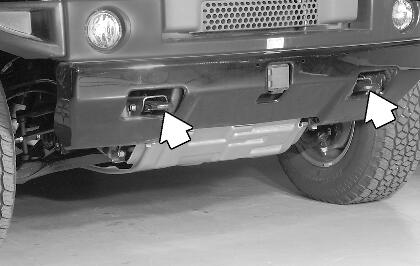
Rear of Vehicle
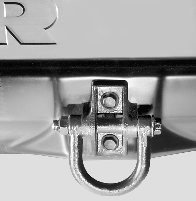
Your vehicle may be equipped with recovery loops at the front and rear of your vehicle. You may need to use them if you are stuck off-road and need to be pulled to some place where you can continue driving.
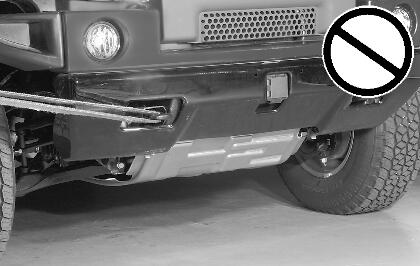
Caution: These loops, when used, are under a lot of force. Keep people away from the vicinity of the loops and any chains or cables during use. Always pull the vehicle straight out. Never pull on the loops at a sideways angle. The loops could break off and you or others could be injured from the chain or cable snapping back.
Notice: Never use the recovery loops to tow the vehicle. Your vehicle could be damaged and it would not be covered by warranty.
First Aid Kit and Tool Kit
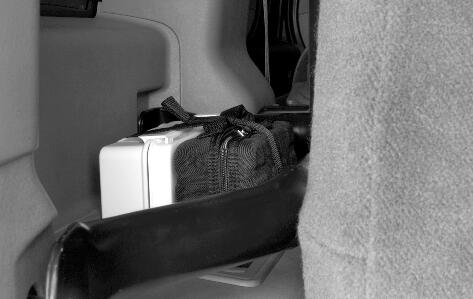
Your vehicle may have a first aid kit and/or a tool kit located in the storage bin behind the spare tire. They are held in place with a hook and loop fastener strap.
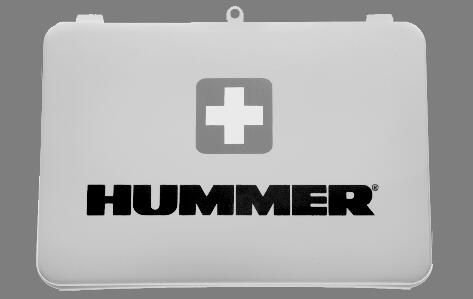
If your vehicle has the tool kit, the kit includes a flashlight, a tire pressure gage and a multi-purpose tool set.
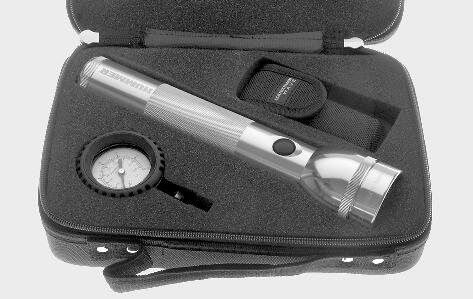

The tire pressure gage has a reset button in the gage stem. After taking a pressure reading, press the button to reset the gage to zero.
Front Receiver
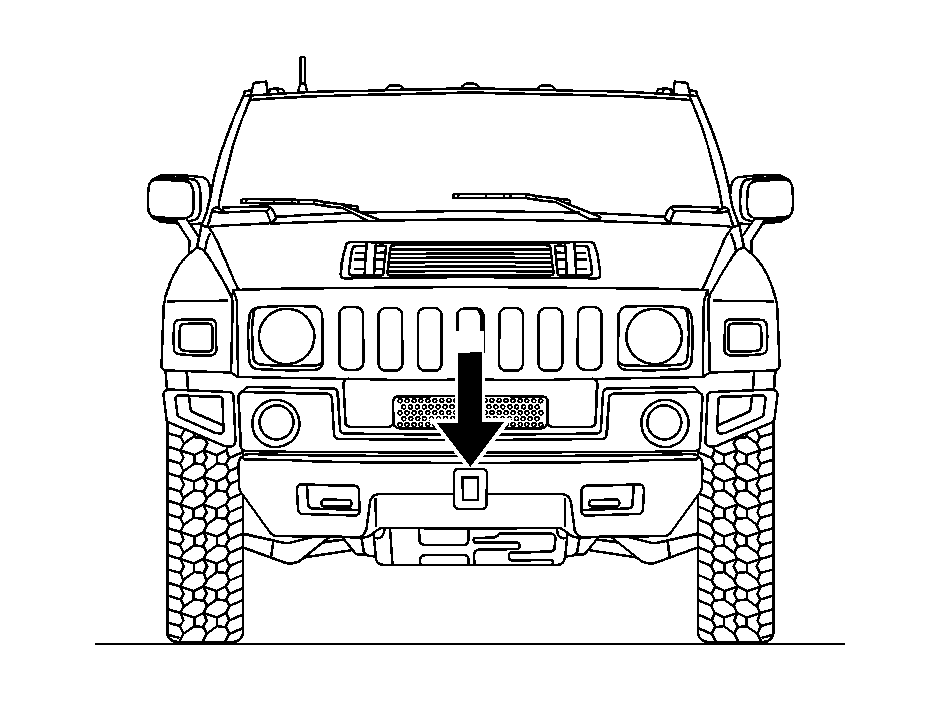
Your vehicle is equipped with a front receiver.
You can use the receiver with a power winch platform (described later in this section), receiver extension or with other accessories.
Never use the front receiver to tow a trailer.
You can use the front receiver to tow your vehicle behind another. See Recreational Vehicle Towing .
Receiver Extension (If Equipped)
Use the receiver extension with the front receiver and various light-duty accessories such as bike racks.
Notice: Do not attach accessories or cargo that weigh more than 240 lbs. (108 kg) to the receiver extension. You could damage the receiver extension and/or your vehicle's frame components.
The receiver extension was not intended for heavy-duty use, such as trailer towing, winching or vehicle recovery.
To use the front receiver with the receiver extension, do the following:
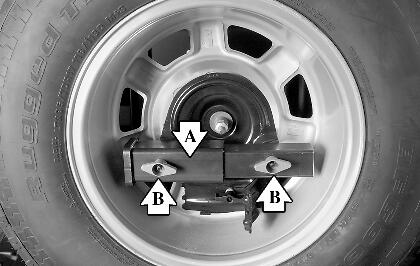
- Locate the receiver extension (A) in the rear of the vehicle where it is attached to the spare tire mounting plate.
- Loosen the wing nuts (B) holding the extension to the spare tire plate and remove it.
- The extension attaches to the front receiver exactly as the power winch platform does. See "Power Winch Platform" following in this section.
- Attach the accessory you will be using to the receiver extension.
Power Winch Platform (If Equipped)
You can use the power winch platform with an aftermarket winch. Connect the winch to the platform and wiring to the vehicle following the winch manufacturer's guidelines.
- Slide the winch platform into the front receiver of your vehicle. To secure it, follow the next step. You will be using the locking pin (if equipped) stored with the jack/tool kit. See Changing a Flat Tire for more information on location.
- Slide the pin down through the hole in the front bumper and into the receiver.
- Turn the clip so that it is perpendicular to the pin. Pin is shown off the vehicle for clarity.
- Push the clip so it locks in place. Pin is shown off the vehicle for clarity.
- With the clip locked and the pin secure, your setup should look like this if you look under the receiver. The pin is now secure and you will be able to use the winch.
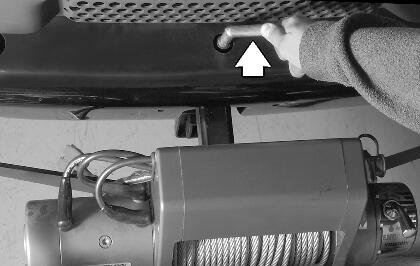
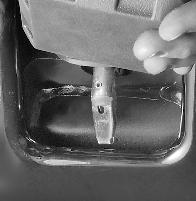
If you look under the receiver, you will see the locking portion (clip) of the pin coming through the bottom hole in the receiver.

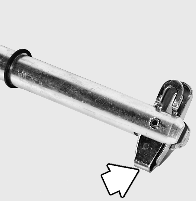
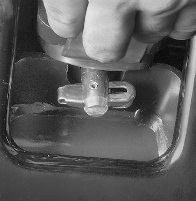
To remove the winch platform, you must first unlock the clip so you can pull out the pin. To unlock the clip, squeeze the clip and turn it so it is in line with the rest of the pin. Remove the pin and slide the winch platform out from the receiver.
Notice: Do not use the winch platform to winch at a tension of more than 9,000 lbs. (4 082 kg). This would damage your vehicle's frame. This damage would not be covered by your vehicle's warranty.
If you are using a winch to pull out another vehicle, follow the winch manufacturer's guidelines and observe the following to prevent damage to your vehicle:
| • | If possible, have your vehicle anchored from the opposite side of the winch to a solid, immovable object. |
| If winching from the front, use both of the rear recovery loops. If winching from the rear, use both of the front recovery loops. |
| • | Put your transmission in NEUTRAL (N). |
| • | Use your regular brakes to hold your vehicle in place and block the wheels to keep the vehicle from moving. |
Notice: Using a power winch with the transmission in gear to pull out another vehicle may damage the transmission. When operating a power winch, always leave the transmission in NEUTRAL (N).
Notice: Driving your vehicle through an automatic car wash with the winch installed can cause damage to your vehicle and the car wash. Always remove the winch from your vehicle before using an automatic car wash. See Cleaning the Outside of Your Vehicle for more information.
If you are using a winch to pull out your own vehicle, follow the winch manufacturer's guidelines for self recovery and observe the following to prevent damage to your vehicle:
| • | Do not self recover your vehicle by wrapping the winch cable around an object (such as a pulley block or tree) and attaching it back to your vehicle's recovery loops. |
| • | Always attach the winch cable directly to a solid anchor directly in front of your vehicle to achieve a straight line pull. |
